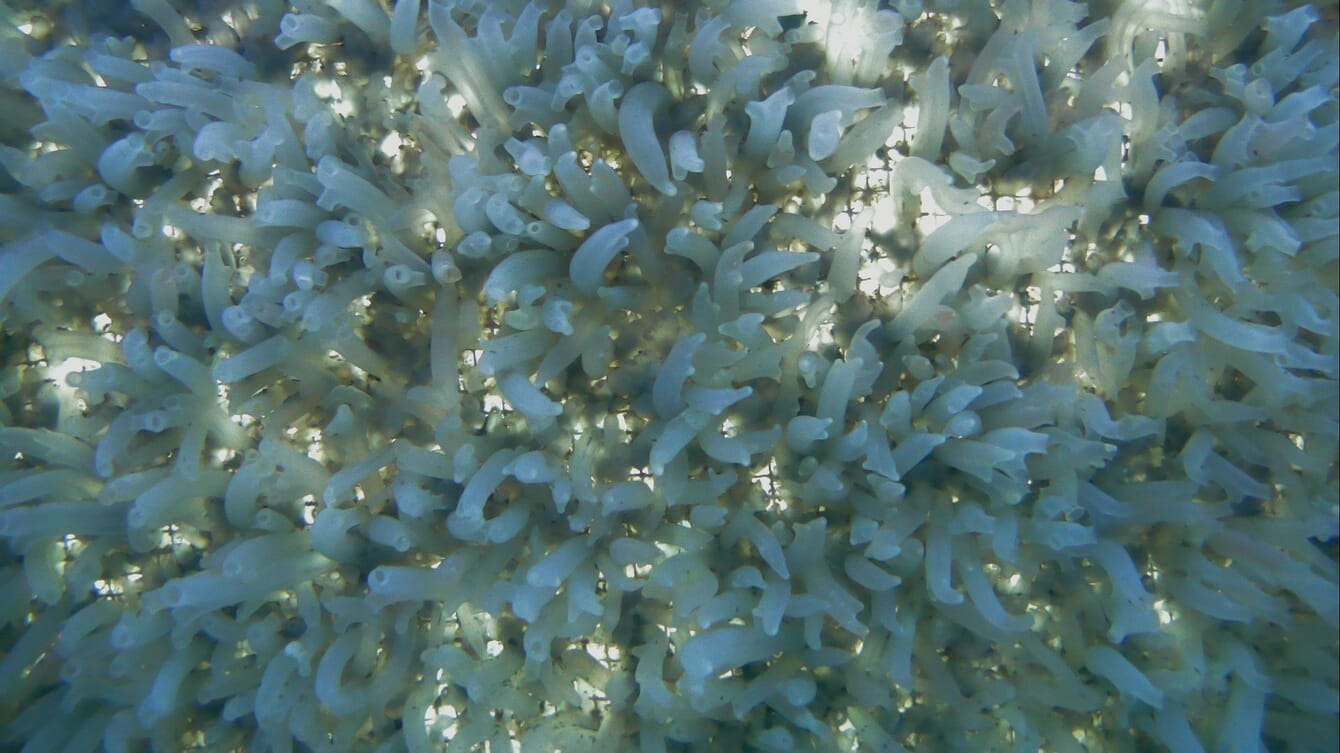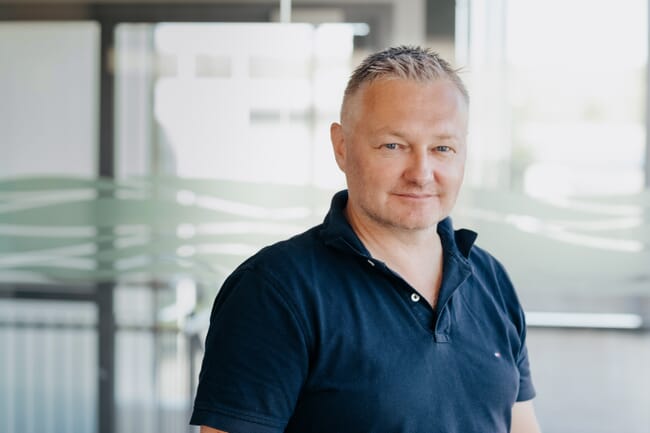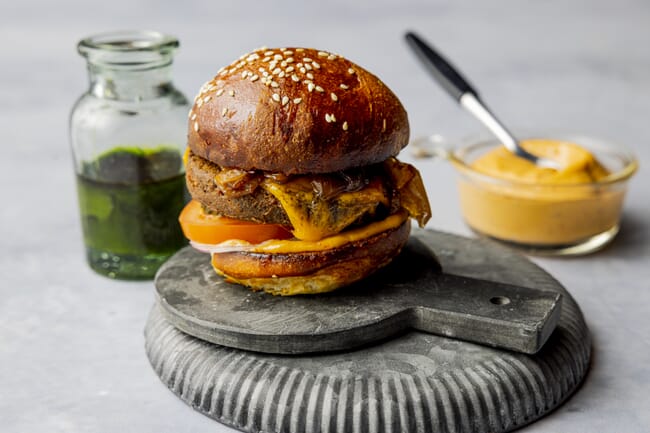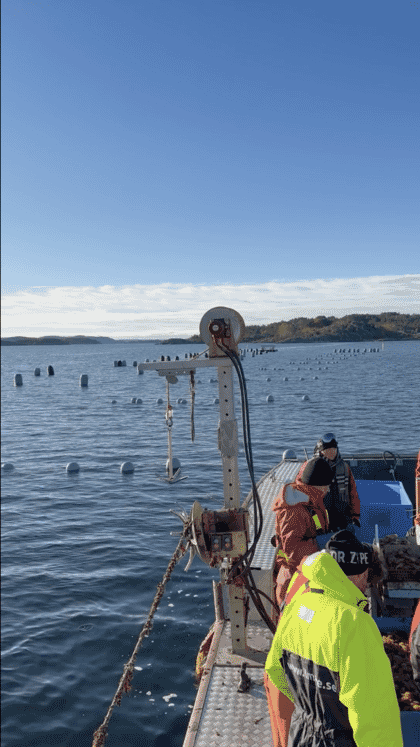
© Pronofa
The company says it has developed a way to farm these tunicates, which naturally colonise structures such as nets and require no formulated feed –fine-tuning it to encourage production of up to 82 kg of tunicate per m2, and enabling an efficient harvesting process.
The production capacity at their current facility in Sweden is approximately 800-1,500 tonnes of minced Ciona meat and they are building a second facility in Norway, which should allow them to produce 2,500 tonnes by 2025 and beyond 15,000 tonnes once both facilities are at full capacity.
Meanwhile, in terms of processing, they claim to have already emulated the taste, function and nutritional value of traditional meat, giving them “a 10–12-year headstart on future competitors”.
CEO, Hans Petter Olsen, explains more.
Can you tell me a bit about your background?
Pronofa was founded in 2021 as a spin-out from Denofa, a Norwegian producer of non-GMO and deforestation-free soy. We aimed to identify new and sustainable protein sources that could complement soy and help to meet the massive demand for proteins expected by 2050 due to global population growth.
Little did we know that one of the raw materials we looked at, a marine tunicate animal called Ciona, which is native to Norway and Sweden, could potentially become essential for the future of food. It is a low-trophic marine animal that can even be used directly for human consumption and could be the beginning of a new industrial adventure to ultimately rival the salmon farming industry.

Can you provide a brief overview of the business?
Pronofa’s HQ is in Fredrikstad, Norway. Our main cultivation and production facility is in Stenungsund, Sweden. However, we are expanding our operations to several other locations, notably Hustadvika south of Kristiansund, Norway, this year. At these sites, where the conditions are optimal for tunicates, we cultivate large volumes of Ciona at up to 20-25 metres depth.
Then, we harvest the raw material and use it to produce minced meat that mimics the taste, and nutritional value and uses of traditional minced meat types. This means that we can produce pasta dishes, pizza, tacos, meatballs, burgers, chili con carne, and more, with a much more sustainable kind of meat.
Our Ciona tunicates have a climate footprint of 0.8 CO2e per kg protein. Therefore, Ciona is – to our knowledge – the world’s most sustainable meat.
We are currently around 20 employees in Norway and Sweden, but the company is growing fast.
What makes the company unique?
What truly makes us unique is that Pronofa is the first company in the world to cultivate tunicates and refine the raw material into a meat product. There are 3,000 species of tunicate in the world, and some tunicates are eaten as raw delicacies in countries like South Korea, France, and Chile. However, this is something else, and Ciona is particularly well-suited for food production.
Unlike most startup companies, Pronofa had both industrial and organisational backing (from Denofa) and significant capital from strong investors. This meant that we could perform different tasks concurrently and advance our business much faster.

What have the key milestones been to date?
The acquisition of the company which is now our Swedish branch was crucial. This company started experimenting with Ciona in 2008 for use in biogas, then feed, and eventually cracked the code for making a flavourful condiment – an Umami fond – a decade later. This breakthrough was followed by the creation of an early version of the minced meat.
At the same time, the Norwegians at Pronofa came in with fresh capital, industrial competence, product development skills, and an idea for how to make the ground-breaking Ciona meat product fit for market. In isolation, this is our key milestone, but many smaller processes have been important to develop and fine-tune our business case.
What are the main challenges that still need to be overcome?
Market acceptance is of course crucial, but we already have very strong indicators that our Ciona meat will be accepted by the public and will compete alongside other meat products. Sustainability is not necessarily a factor that most consumers prioritise when buying food, but it could be considered an added benefit. Moreover, more and more companies have set sustainability goals, and an “ultra-sustainable” meat source could be a shortcut for reaching some of those goals. The interest from both grocery store chains and HoReCa markets is substantial.
What do you think are the most promising applications for tunicates?
It’s actual meat. It tastes similar to traditional meat and boasts similar nutritional values. It can be used in dishes that are already popular.
The major difference is that it is many times more sustainable than traditional meat types. Even mixing in 20 percent Ciona meat with other minced meat, would significantly lower the total CO2e value of the product, and most consumers could probably not tell the difference.
How widely can tunicates be produced and do you have any plans to expand production?
Tunicates – various species – can be found all over the globe. More than 3,000 species have been discovered. However, Ciona grows naturally along the coast of Sweden (from around Gothenburg) and Norway (to around Trondheim). The fjords and coastline are perfect habitats for this sort of aquaculture, and we have applied for several licences where the temperatures and certain biological factors also make for good cultivation conditions.
We will be able to cultivate very large volumes of Ciona in the coming years, and we aim to export our Ciona products outside of Scandinavia too.

The company has ambitions to ramp up production to 15,000 tonnes a year
How have you funded the business so far and will you be looking for further funding?
Pronofa was funded by Denofa and a handful of strong investors. We are doing another equity issuance right now and are preparing for an Initial Public Offering (IPO).
Where would you like the startup to be in 10 years time?
We are already where other startups would usually be after 10 years, thanks to Denofa and our investors. The UN predicts that the world population will surpass 9.7 billion by 2050. Consequently, we need to increase global food production by 60-70 percent at the same time.
Yet, due to the global climate crisis, we must accomplish this nearly impossible task in a way that does not cause additional damage to our planet.
As the CEO of both Denofa and Pronofa, I am convinced that we will need both traditional protein sources, such as sustainably sourced soybeans, and alternative protein sources for no one to go hungry in the future. They must complement each other and be used sensibly for different purposes that benefit humankind.
In this scenario, Ciona meat isn't just another contender. Produced in vast volumes at sea with minimal environmental impact, our sustainable meat source is a revolution waiting to happen. This is the future of food.



